Isabella Stewart Gardner’s enthusiasm for Spanish culture was legendary. We’ve explored Isabella Stewart Gardner’s passion for Spanish art and music in some of our previous posts, elaborating on her travels in Spain, her fondness for flamenco music, and her embrace of Spanish artists, as well as paintings inspired by Spanish subjects. But did you know that she was also fascinated with the art and culture of other Spanish-speaking regions including Central America?
In January 1881, Isabella, Jack and some friends left Boston by train for a tour of the American West. Isabella included a map in her travel album, highlighting the route to Chicago. From there they headed south, stopping in Arizona, New Mexico, and Texas. Gardner included pictures of the Spanish colonial churches in Santa Fe and Tucson, and photographs from a Pueblo village in Santo Domingo Pueblo, New Mexico. From El Paso, they made their way across the border to Mexico.
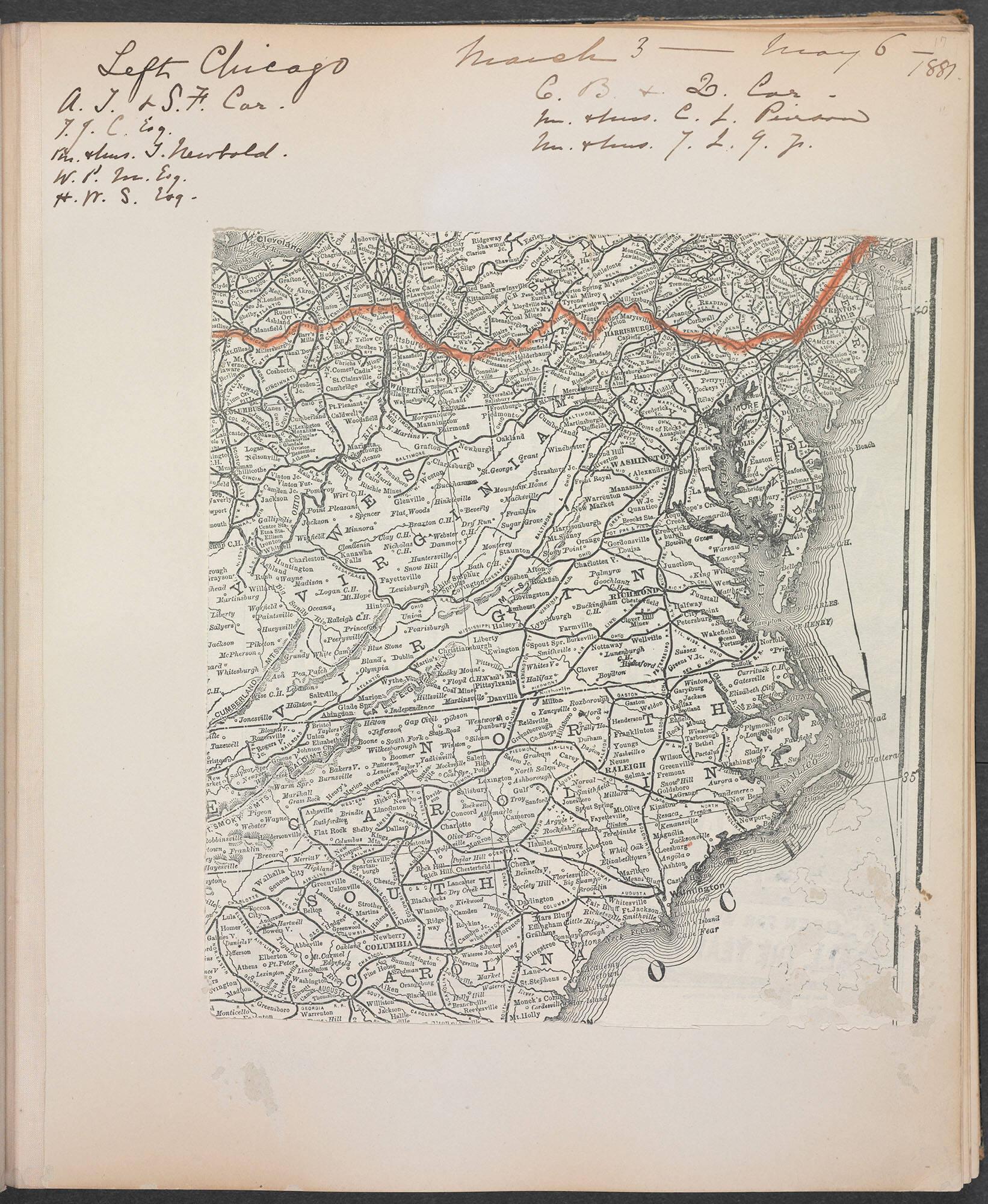
Page 17 from the travel album. Isabella Stewart Gardner (New York, 1840 - 1924, Boston), Travel Album: Germany, Denmark, Norway, Sweden, Russia, Poland, the Western United States, Florida, Mexico, and Cuba, 1867-1886. Bound album including collected photographs, found papers, pressed botanicals, and pen and ink annotations, 32.1 x 27 x 3.5 cm (12 5/8 x 10 5/8 x 1 3/8 in.)
Isabella Stewart Gardner Museum, Boston (v.1.a.4.1)
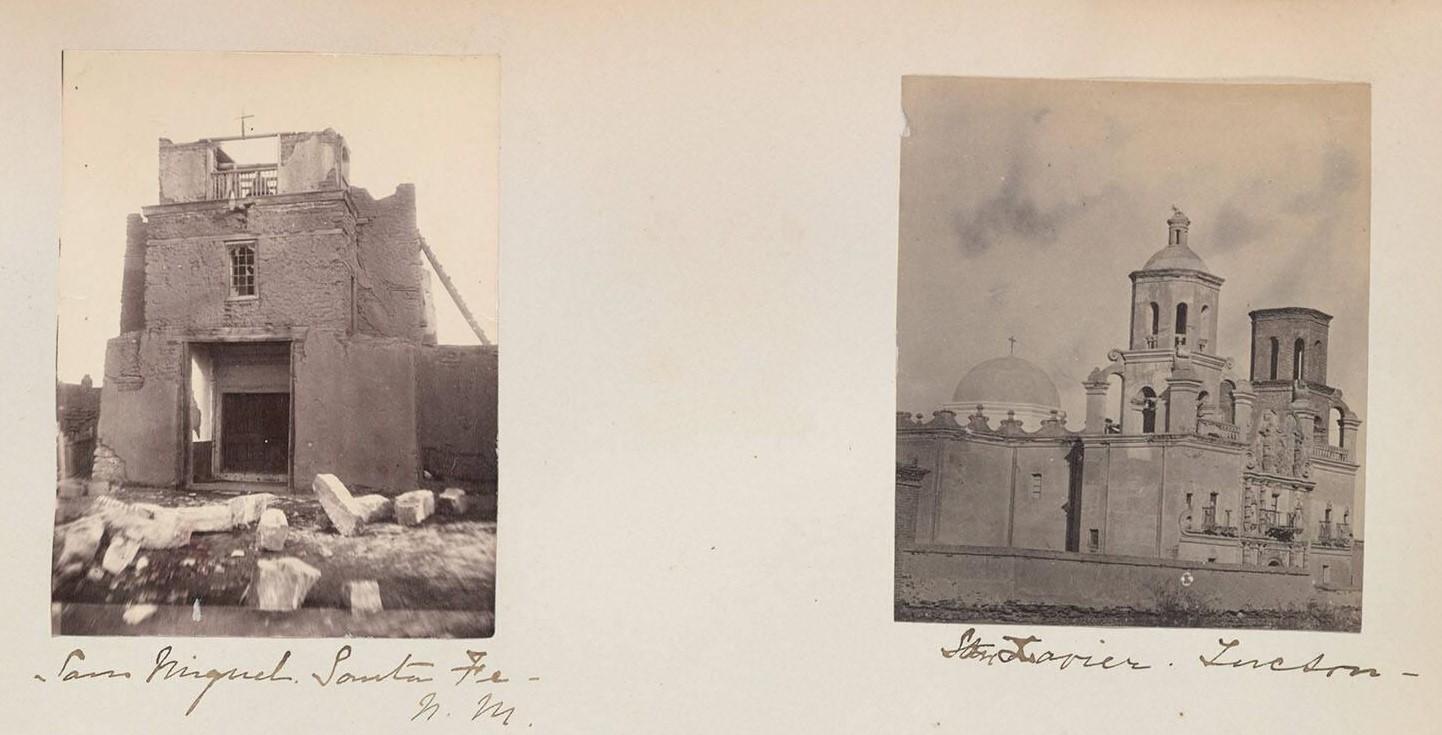
Detail from page 19 from the travel album. Isabella Stewart Gardner (New York, 1840 - 1924, Boston), Travel Album: Germany, Denmark, Norway, Sweden, Russia, Poland, the Western United States, Florida, Mexico, and Cuba, 1867-1886. Bound album including collected photographs, found papers, pressed botanicals, and pen and ink annotations, 32.1 x 27 x 3.5 cm (12 5/8 x 10 5/8 x 1 3/8 in.)
Isabella Stewart Gardner Museum, Boston (v.1.a.4.1)
The visit to Mexico lasted only four days and Gardner singled out the multiple times the group had to ford the swollen Rio Grande River. Even though few notes of this trip survive, Gardner’s enthusiasm for this region and its culture emerge in unexpected ways throughout the museum. Notably, she owned sixteen mammoth-plate photographs of the American West and Mexico by the celebrated American photographer William Henry Jackson, and installed them in the rear stair hall of Fenway Court.* One, for example, depicted an Aztec calendar stone.
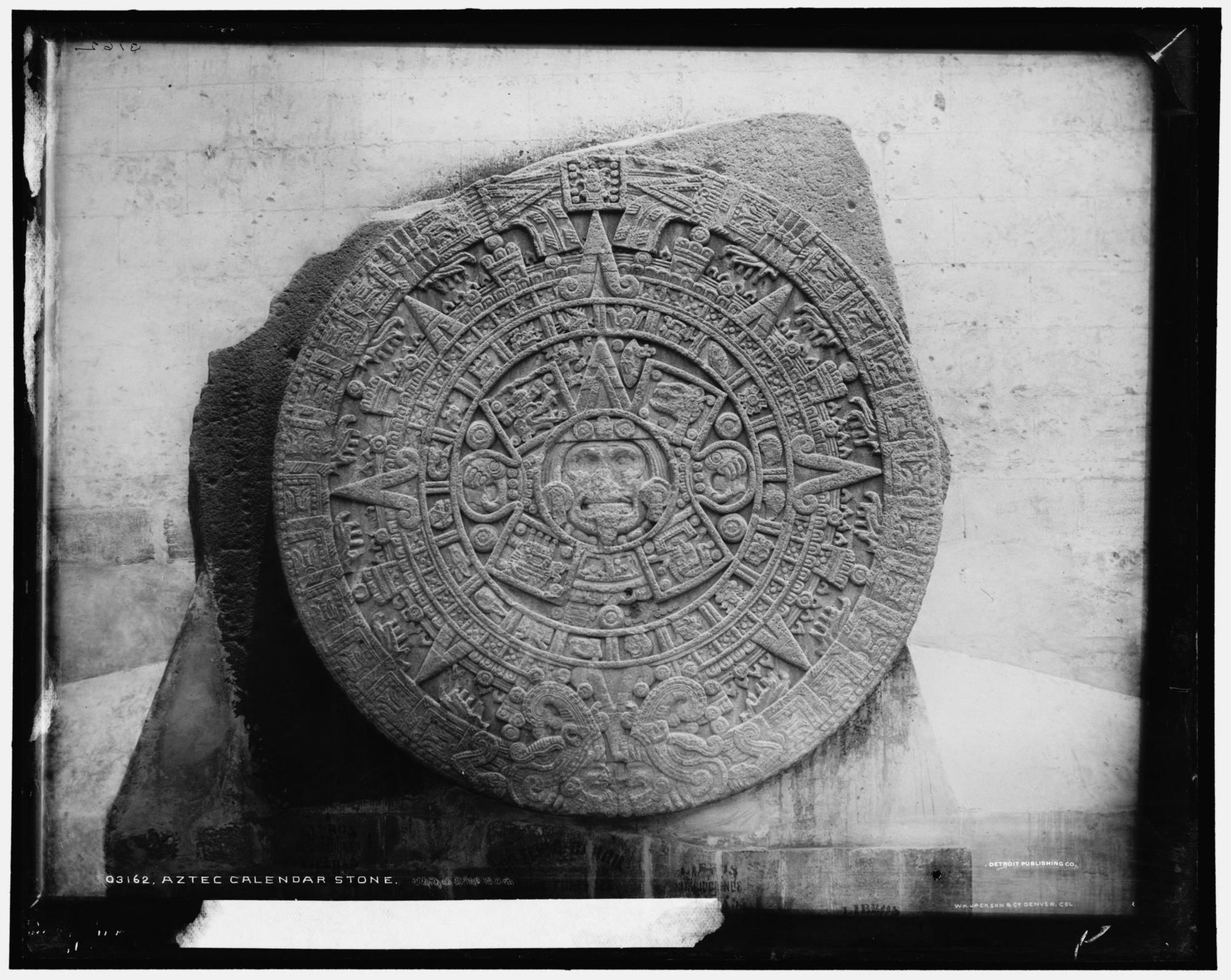
Detroit Publishing Co, P., Jackson, W. H., photographer. Aztec Calendar Stone. Mexico City Mexico, None. [Between 1880 and 1897] [Photograph]
Retrieved from the Library of Congress, https://www.loc.gov/item/2016797237/. One of the photographs like the one previously found in the rear stair hall on the West wall of Fenway Court.
Her interest in the Spanish cultures of Central America may have been piqued by the stories of travel told to her by close friends. In 1872, Theodore Frelinghuysen Dwight— a writer, employee of Putnam and Sons publishing house, and later the director of the Boston Public Library—stopped in Panama on a journey from California to New York. He later wrote to Gardner describing the visit in detail.
The cathedral of Santa Maria la Antigua stood out to Dwight. Consecrated in 1796, it had been damaged by a fire in 1870 and was subsequently closed to the public. Dwight persuaded its custodian to allow him entry, despite the building’s perilous condition and his fear that “at any moment the roof would fall.” Among the debris at floor level were pieces of the ceiling decoration. The custodian permitted him to keep two carved wooden heads and a piece of the ceiling molding.
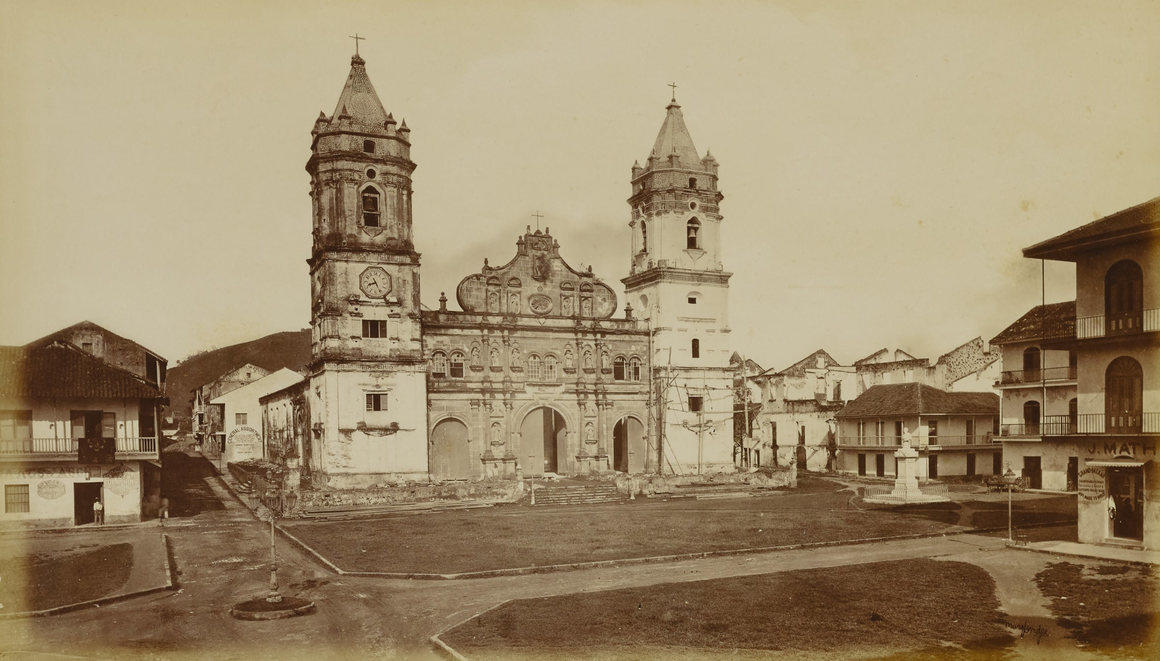
Eadweard Muybridge (English, April 9, 1830 - May 8, 1904), Cathedral, Panama, 1875, published 1877, albumen silver print
Exterior view of the cathedral of Santa Maria la Antigua after the fire.

From left to right: Spanish, Cherub Head, late 18th century. Wood, 10.2 x 15.2 x 7.6 cm (4 x 6 x 3 in.); Spanish, Cherub Head, late 18th century. Wood, 20.3 x 25.4 x 11.4 cm (8 x 10 x 4 1/2 in.); Spanish, Cherub Head, late 18th century. Wood, 10.2 x 15.2 x 7.6 cm (4 x 6 x 3 in.).
Isabella Stewart Gardner Museum, Boston (S6e6, S6e10, and S6e2). The two carved wooden heads and piece of ceiling molding side by side as displayed in the Spanish Chapel along the top of the window.
In 1915, Dwight recalled the visit in a letter to Gardner and donated the three pieces of sculpture to her museum. Gardner installed them in the Spanish Chapel where the carvings form a decorative frieze, providing a suitable complement to the Spanish works of art and religious setting (Fig. 6). Dwight recognized Gardner’s interest in art and architecture from the Spanish-speaking world,making sure the fragments had a home where they could be preserved for the public to see and enjoy.
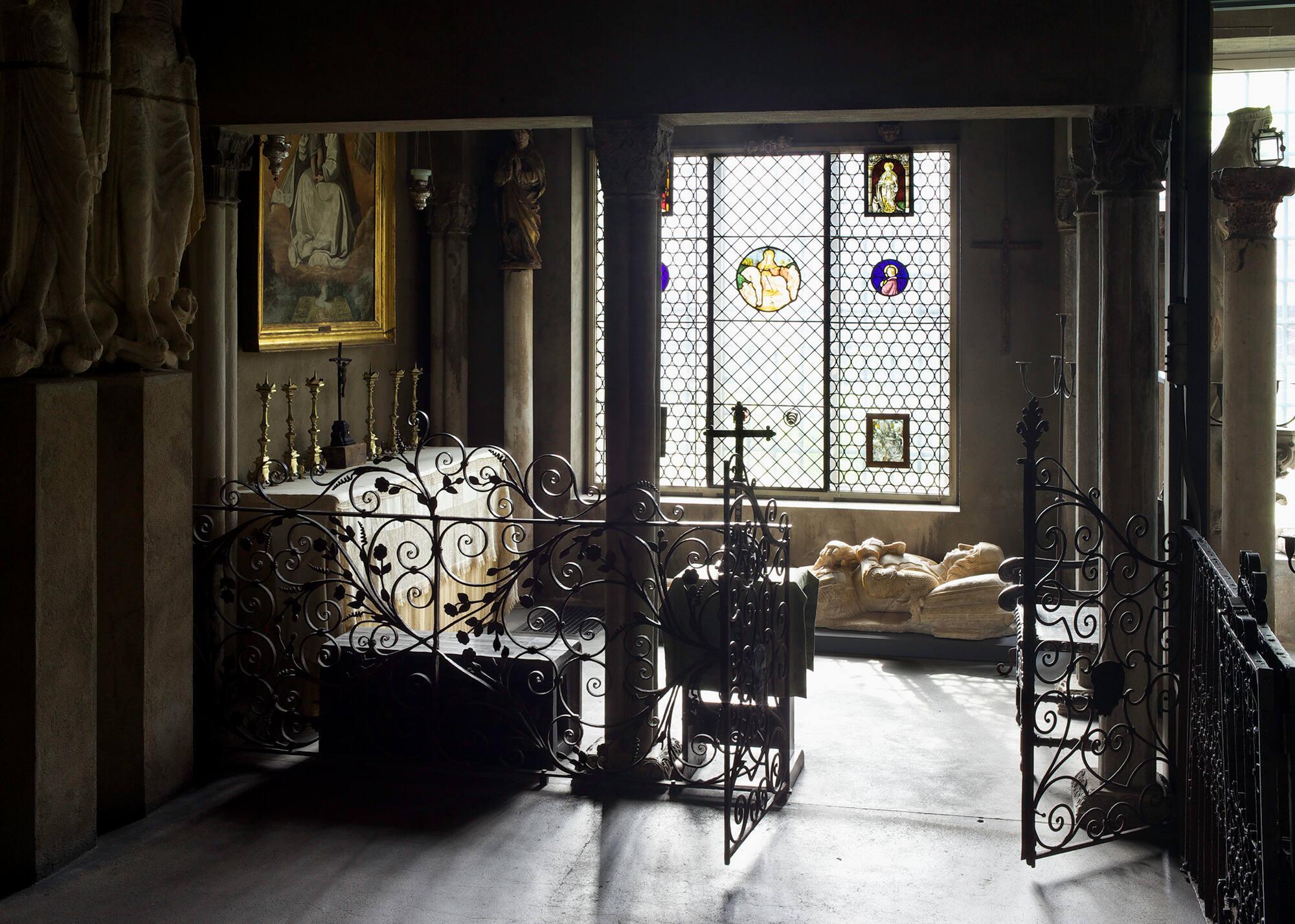
The Spanish Chapel
Isabella Stewart Gardner Museum, Boston
*In February 1973, the Museum gave these photographs to the Boston Public Library.